Abstract
Approximately 30 minutes of computer access time are required by surgical residents at Stanford University Medical Center (SUMC) to examine the lab values of all patients on a surgical intensive care unit (ICU) service, a task that must be performed several times a day. To reduce the time accessing this information and simultaneously increase the readability and currency of the data, we have created a mobile, pen-based user interface and software system that delivers lab results to surgeons in the ICU. The ScroungeMaster system, loaded on a portable tablet computer, retrieves lab results for a subset of patients from the central laboratory computer and stores them in a local database cache. The cache can be updated on command; this update takes approximately 2.7 minutes for all ICU patients being followed by the surgeon, and can be performed as a background task while the user continues to access selected lab results. The user interface presents lab results according to physiologic system. Which labs are displayed first is governed by a layout selection algorithm based on previous accesses to the patient's lab information, physician preferences, and the nature of the patient's medical condition. Initial evaluation of the system has shown that physicians prefer the ScroungeMaster interface to that of existing systems at SUMC and are satisfied with the system's performance. We discuss the evolution of ScroungeMaster and make observations on changes to physician work flow with the presence of mobile, pen-based computing in the ICU.
Full text
PDF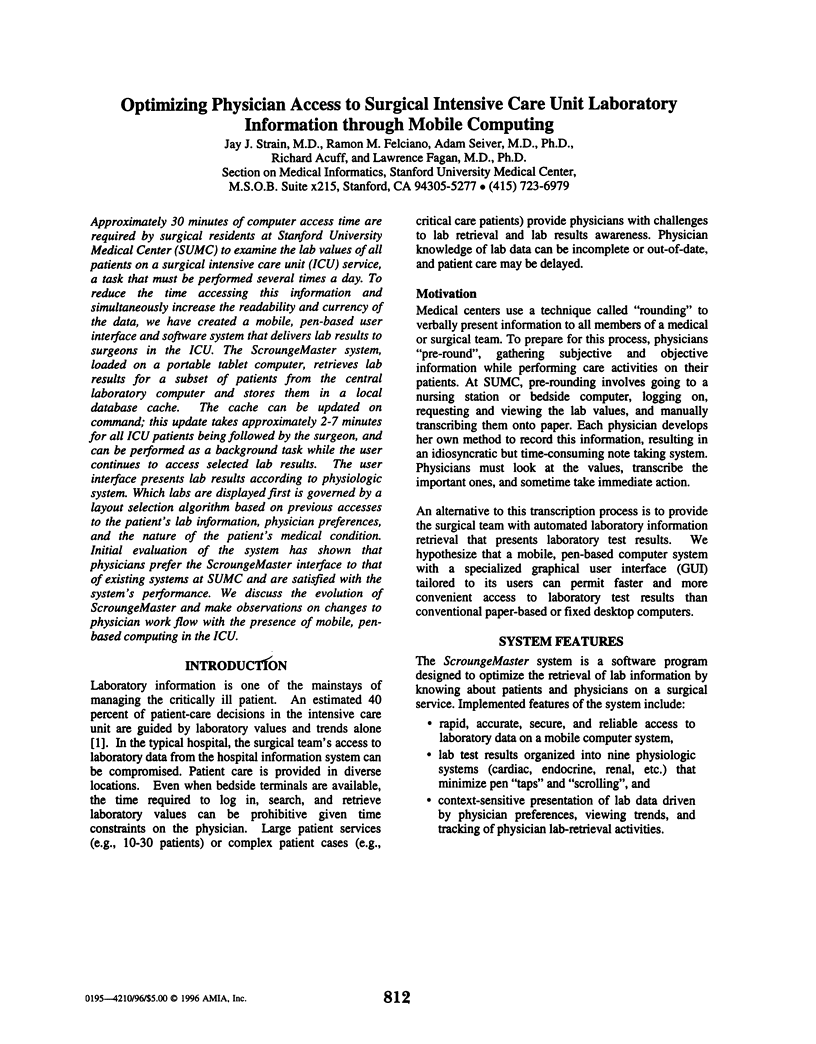
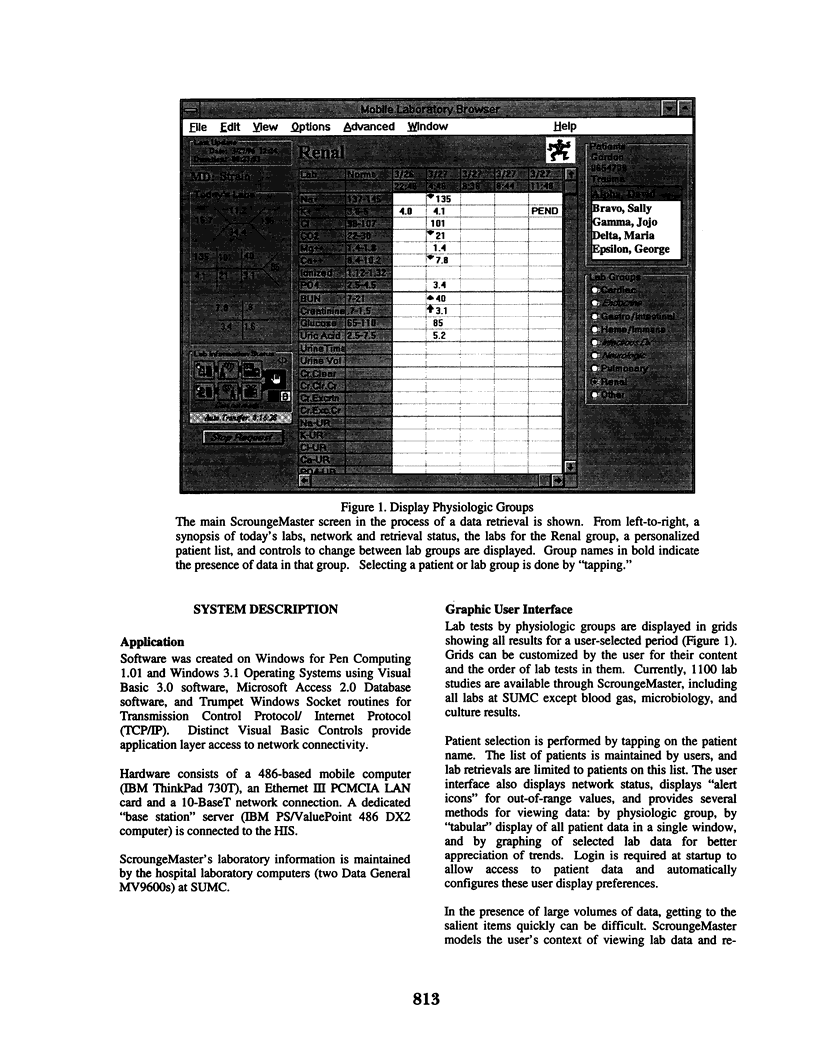
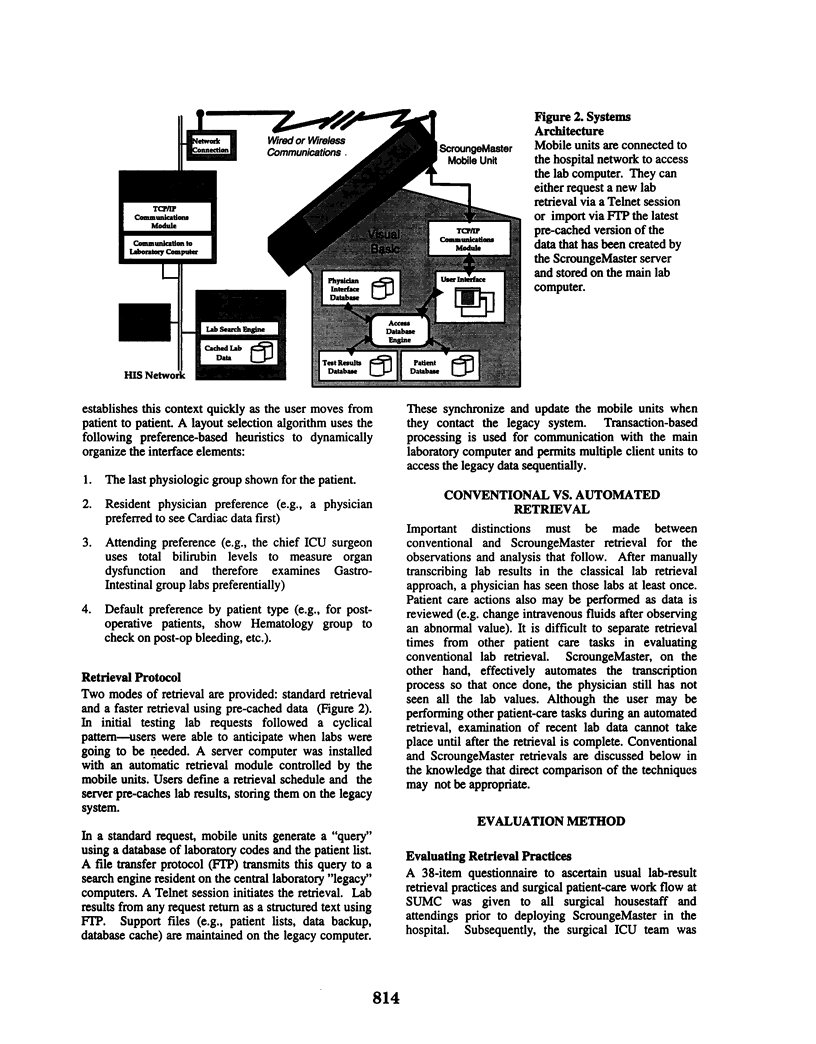
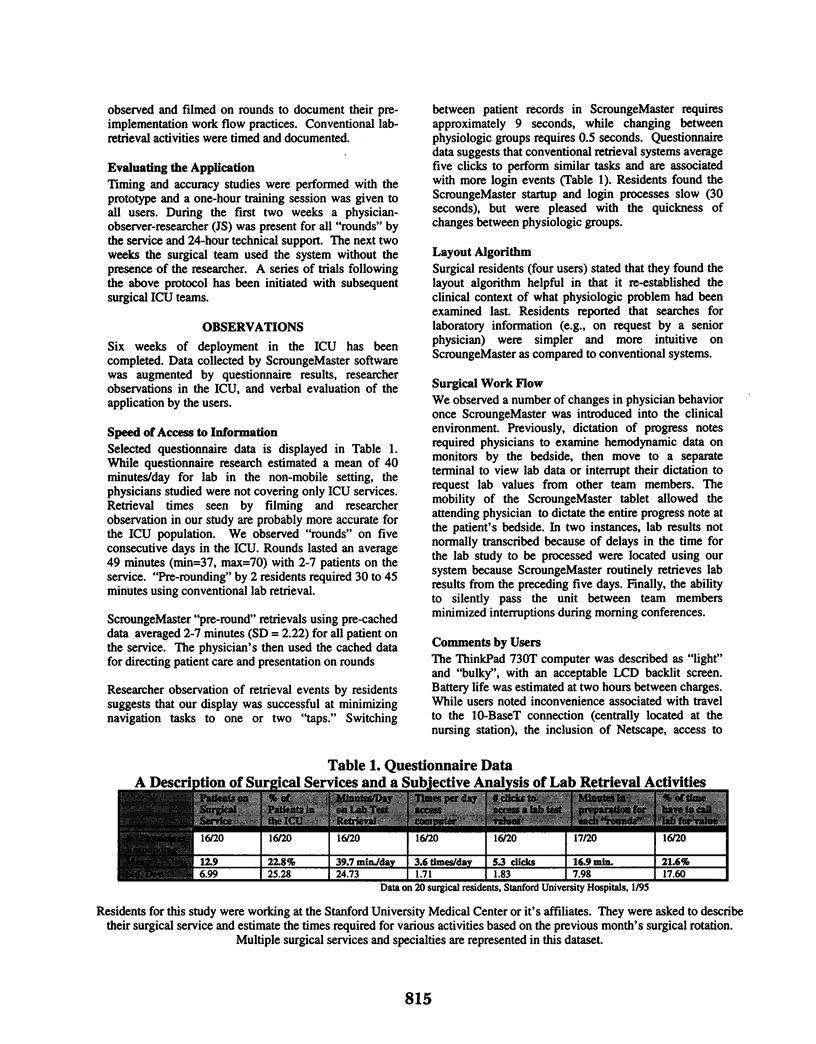
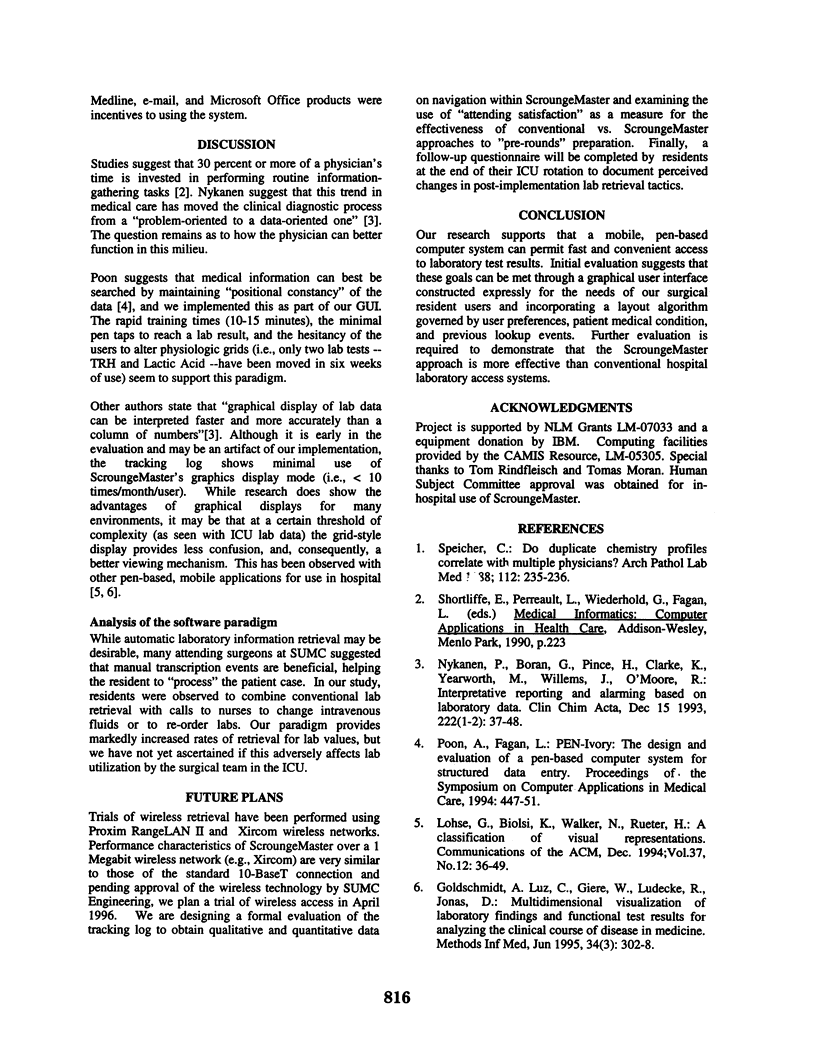
Selected References
These references are in PubMed. This may not be the complete list of references from this article.
- Nykänen P., Boran G., Pincé H., Clarke K., Yearworth M., Willems J. L., O'Moore R. Interpretative reporting and alarming based on laboratory data. Clin Chim Acta. 1993 Dec 15;222(1-2):37–48. doi: 10.1016/0009-8981(93)90090-q. [DOI] [PubMed] [Google Scholar]
- Poon A. D., Fagan L. M. PEN-Ivory: the design and evaluation of a pen-based computer system for structured data entry. Proc Annu Symp Comput Appl Med Care. 1994:447–451. [PMC free article] [PubMed] [Google Scholar]
- Speicher C. E. So duplicate chemistry profiles correlate with multiple physicians. Let's not blame the doctors! Arch Pathol Lab Med. 1988 Mar;112(3):235–236. [PubMed] [Google Scholar]


